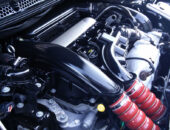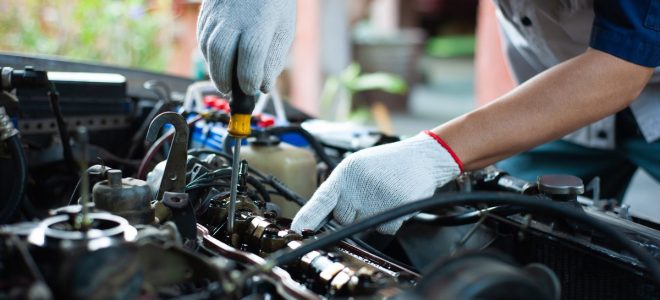
Most car owners remember to budget for common car costs like insurance. But car repair and maintenance costs come unexpectedly. So if you haven’t planned for it, you may be forced to postpone repairs, which may lead to even major repairs.
It is advisable to budget for car repairs because it is a major investment. And if your manufacturer warranty has expired, a used car warranty is a great alternative. You may get both powertrain and bumper-to-bumper warranty with the best extended car warranty.
Also, you may refer to the CarShield reviews for help on what to look for when buying used car warranties.
That said, here are ways to budget for your car repairs.
Get Your Average Repair Budget
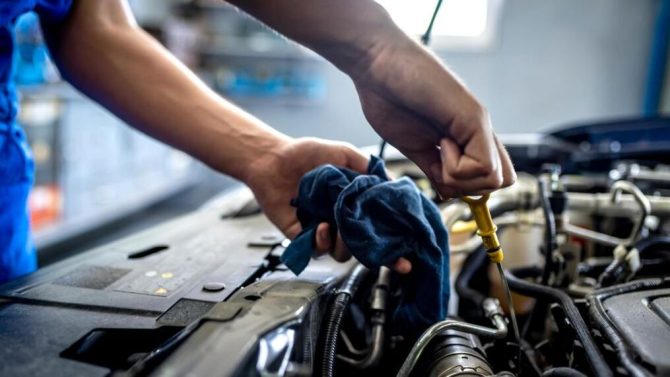
Source: wtov9.com
If you collect all your car repair information for the past year, you can get your yearly budget. Then divide this amount by 12 to get your monthly expenses.
Of course, you won’t be repairing your car every month. But it is recommended to set aside some amount if any repairs sneak up on you. According to CAA, car owners spend about $500-$700 per year on car repairs and maintenance. So, this will cost you about $42-$58 monthly repair expenses. But if you can save more, you will be better prepared for an emergency.
Understand Your Car Repairs
There are several myths about car repairs out there. But if you want to know your vehicle, your manufacturer knows it best. Go through your car’s manual to understand your car’s specific maintenance schedule. Experts may help you, but every car is different, and general schedules may not apply in your case.
So, how do you maintain your car?
A lot of factors go into car maintenance. Your vehicle has many working components, and each needs repairs at some point. But some parts need more frequent repairs than others.
Remember, most experts recommend your car maintenance schedule in distance rather than time. That’s why most repairs will be recommended for specific miles or kilometers ranges. So, the more miles you add, the more your parts wear. But if you drive less or in places without traffic, you will need fewer repairs.
If you understand car repairs, you should also understand the condition of your car. For example, a used car needs more repairs than a new one. So, increase your budget for it.
Find a Reliable Mechanic

Source: autotrainingcentre.com
The best mechanic can go a long way in reducing your budget and getting repairs at an affordable price.
According to AAA, two in three people don’t believe auto repair shops are trustworthy. Most people think that repair shops are out to defraud them. For more information on car body shops please visit NRC Group
But it is important to establish a good relationship with your mechanic. You can find one through the AAA Approved mechanics’ website. AAA considers several factors like technician certification, track record, customer service, and financial stability.
Other sites you can use include the Better Business Bureau and the Automotive Service Excellence (ASE). Better yet, you can read auto repair shop’s online reviews or ask friends and family for a local one.
It is also advisable to compare several quotes before settling for a mechanic. Even if you have one, you can always get a better deal. Plus, you can use their competitor’s prices to land a cheaper deal.
Another way to save money is by asking for discounts, promotions, or coupons.
Reduce Repair Costs
Even after budgeting, it’s important to keep costs down and make better decisions. You can do this by following several simple tips. Remember to always go for quality because a cheaper spare part may not last.
Do It Yourself
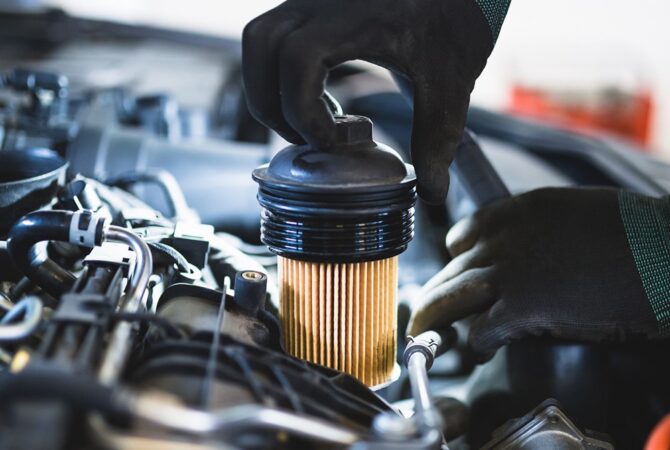
Source: autocorp.pk
You don’t need to go to your mechanic with every repair. Some minor repairs are excellent DIY projects. For example, you can learn to replace batteries, spark plugs, flat tires, lights, or wipers.
Online tutorials are great resources if you don’t know how to do some simple DIY car repairs. There are tons of videos and articles that give step-by-step guides to almost every repair. That way, you can save on labor costs.
The trick is to know repairs that need experts and those that will be great side projects.
Understand Maintenance Checklist, Common Repairs, and Costs
A maintenance checklist helps you know when to do repairs and how much you’ll part with. There is no one-shoe-fits-all for maintenance, but a rough guide may help you with estimations, which is good for your budget.
For car repair timelines, you can skim your manual for precise scheduling. For example, there are repairs that you need at least every 6,000 miles. Other maintenance routines are usually done after every 6,000 miles.
Maintenance Before 6,000 Miles
Change Your Oil and Oil Filter
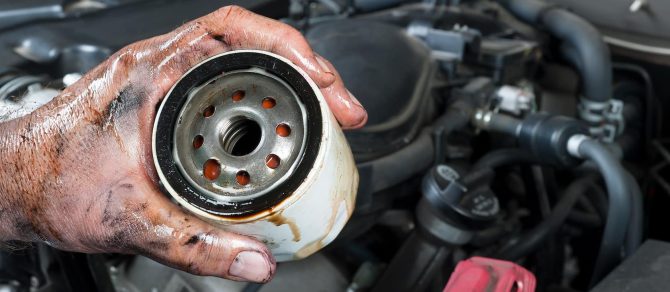
Source: pacificbmw.com
Fresh oil improves the performance of your engine. If you ignore oil replacement, you risk operating on sludge, leading to worse engine damages. Your car has several moving metals, and friction and heat may wear them out with time. Without a lubricant, your cylinders, pistons, and gears can seize up or meld together.
The more you delay your oil change, the dirtier it gets. And dirty oil is more harmful to your car components because it is erosive and thick. Of course, your oil filter keeps dirt away from your oil, but with time, it may fail.
Typically, an oil change should set you back about $35-$75. And you can budget for this every 5,000-6,000 miles.
Remember, you can either buy synthetic or conventional oil. Synthetic oil is costlier, but it is better than regular oil.
Inspect Your Tires
Tire rotation ensures your tire wear at the same rate. Different mechanics use different rotation methods, but most mechanics interchange your front and rear tires. Timely rotation will ensure your tires last longer and reduce uncomfortable vibrations.
Depending on roads and driving habits, tires can last for six years or more. But you should rotate your vehicle every 6,000-8,000 miles.
While at it, check the condition of your tread and tire pressure. Remember not to over inflate or underinflate your tires. Also, you can do wheel alignment whenever you rotate your tires, but it is not mandatory.
Tire rotation can cost you about $24-$240.
Car Wash
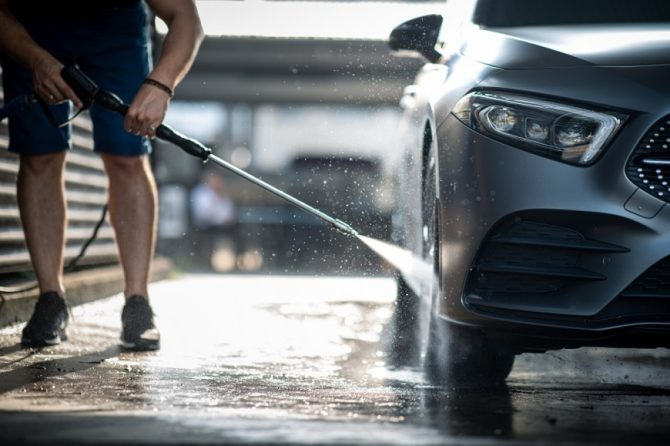
Source: alo.rs
It seems obvious, but some car owners ignore washing their car for way too long. With time, salt, grime, and dirt will accumulate, leading to rust. But even without rust, a car wash can help you maintain your vehicle’s value for years.
There is one simple piece of advice here. If your car looks dirty, it’s time to wash. Washing your car doesn’t seem like an important financial tip, but it is. It may save you hundreds of dollars in the long haul and maintain your car’s resale value.
Car wash typically costs under $15, and a full-body wash about $25.
Maintenance After 6,000 Miles
This type of maintenance usually costs more than those under 6,000 miles. It also focuses on more specific repairs, making them more critical. Stay on top of maintenance to improve your car’s performance, resale value, and safety.
Some repairs seem like a deep dent in your pocket, but they are always important. If you ignore them, they lead to costly damages down the road.
Filter Replacement
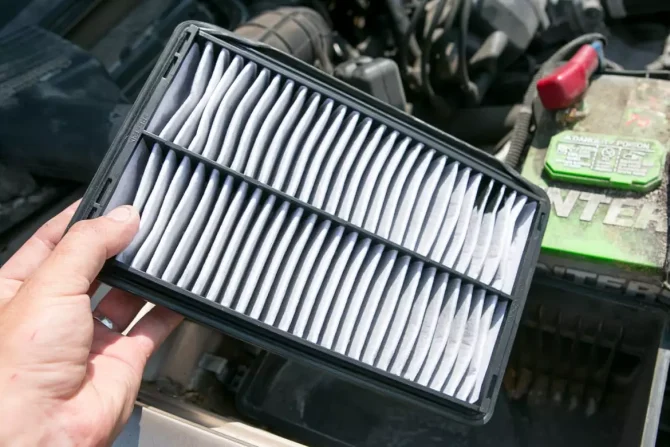
Source: cars.com
Filters keep debris and pollutants out of several car parts.
-
Engine Air Filter
This filter keeps dirt and dust from your engine, making it easier for it to operate. The ideal replacement interval depends on your car and where you live. So, if you live in a dusty place, you may replace it sooner.
That said, most experts recommend changing it every 15,000-30,000 miles. And it should cost you about $70-$100.
-
Cabin Air Filter
Cabin air filters keep the air you breathe fresher by keeping debris out of your HVAC unit. You should also replace this filter every 15,000-30,000 miles. It will cost you $70-$100.
-
Engine Fuel Filter
This filter traps debris flowing from your fuel tank. Your car needs pure fuel, and a clogged filter may limit fuel flow.
However, your fuel filter replacement doesn’t have a definite timeline. It depends on your car model, the distance you travel, and the type of fuel. So, any time your mechanic changes your air filters, they can also check your fuel filter. But generally, these filters last longer.
Wheel Alignment
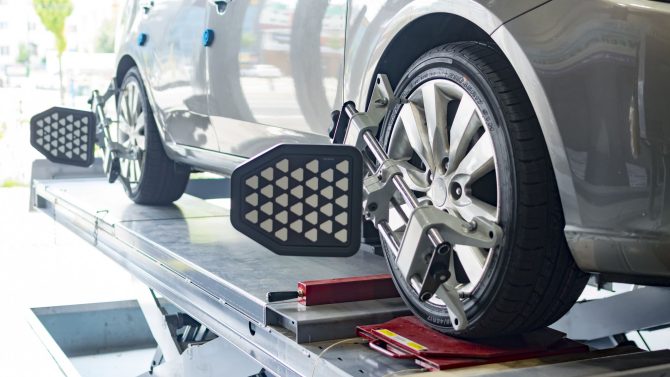
Source: liveabout.com
Sometimes, your wheels don’t move in the same direction, which may lead to faster wear. So, wheel alignment reduces wear and improves the performance of your tires. You can do all wheels at once or do the front and the rear on separate dates.
There are several recommendations when it comes to wheel alignment. Some experts may recommend every two years, while others recommend yearly alignment. Others say you do it whenever you install new tires.
But as mentioned, you can do wheel alignment whenever you rotate them for convenience. So the average cost should be somewhere around $150-$400 for four tires.
Brake Pads
Your car’s brakes determine your safety and that of others. So, it is important to have them working at optimum performance.
Remember, your brakes have different working components. But friction takes a bigger toll on your brake pads every time you brake. So over time, you need brake pads replaced.
You should replace your brake pads every 10,000-20,000 miles. On the other hand, rotors last a bit longer, and you may replace them every 50,000-70,000 miles.
Garages usually charge per axle when replacing brake pads. That may cost about $100-300 per axle.
Transmission Fluid
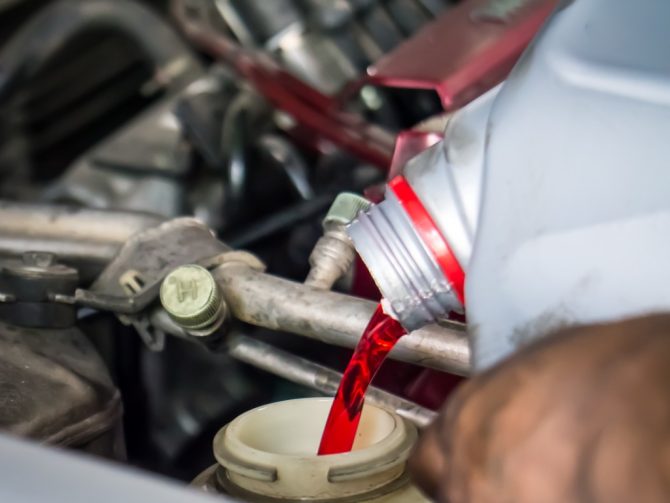
Source: autozone.com
Transmission handles the operation of your gears. And transmission fluid allows for a smooth performance.
That said, you’ve probably heard that you don’t need to change your transmission fluid. But replacing the fluid every 30,000-60,000 miles is important for manual cars. Automatic cars have a longer period of about 60,000-100,000 miles.
The price range for transmission fluid is about $150-$300.
Heating and Cooling System Inspection
Your AC and heating unit is quite important in your car. Whether in extreme cold or heat, your car is tolerable because of this system.
Before winter or summer, it may be important to ensure this unit is in tiptop shape. It won’t be lovely to get caught out in extreme weather without your HVAC unit.
You can check this system every year with a new car.
Spark Plugs
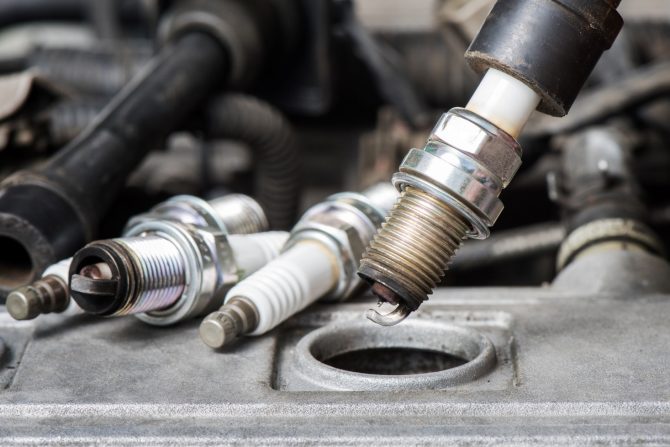
Source: minit-tune.com
Spark plugs work by igniting the fuel in your car to start your engine. Without good spark plugs, your engine may fail to start or stall when starting.
Your car’s manual is a good resource to know when to change your spark plugs. However, different models have different plugs replacement intervals. That’s why there is no blanket time interval for every car.
Spark plugs are affordable, but labor costs may take a bigger chunk. You may pay around $40-$150 for these replacements or do the replacement yourself.
Battery
A car’s battery works with your alternator to distribute electricity in your car. Also, your battery may be the one component that does not wear with distance. It wears with time.
It takes about 3-5 years for your battery to die. A new battery will set you back about $50-$180 if you replace it yourself. If you add labor costs, it may cost you $118-$216.
Budgeting for Unexpected Issues
The above checklist involves repairs and maintenance that follow a specific schedule. This allows you to make your budget in advance.
However, unexpected breakdowns don’t fit in this fixed schedule. So, it is important to have an extra reserve for these sudden problems.
Separate Car Maintenance Funds
It’s advisable to separate car maintenance from other household expenses. This money should be specifically put aside for car repairs and maintenance. You can open a different savings account for it, and as you add money, you will have repair money any time.
Bottom Line
According to an AAA study, about one in three drivers couldn’t meet their repair costs without going into debt. So, saving is important to be on the safe side.
Stay updated with common repairs and their national average costs. That way, you can make an excellent budget. Luckily, you can go for two years or more without an emergency repair, and your savings may be enough then.


